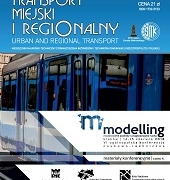Abstract 1/2017
Table of content
Krzysztof Grzelec, Mateusz Miloch – Modeling of multimodal urban public transport trips
Ewa Kusio – Intelligent support for operational traffic management
Tomasz Magiera, Kaja Wójcik, Paweł Kułaga –Rope transport ground systems supporting urban public transport – historical solutions
Sławomir Książek – Passenger rail connections in the Lower Silesia after 1989 – a spatial aspect
Piotr Szymański, Remigiusz Koc, Robert Lauks, Paulina Markiewicz –Perception of traffic sings by drivers: analysis of visual attention in mobile eye-tracking studies
Abstracts
Krzysztof Grzelec, Mateusz Miloch
Modeling of multimodal urban public transport trips
Abstract: Changes in travels realized by means of public transport in cities are judged by passengers negatively, as an additional inconvenience of the trip. However, the network of public transport connections based on transfer changes may be more efficient. In certain cases connecting trips may be more comfortable than the direct in the subjective opinion of passengers. It is therefore important to identify the factors determining passengers preferences in terms of trips with transfer changes comfort. The article describes original method of carrying out a research aimed at identifying travel behaviour and travellers preferences in the term of trips with changes. The research conducted among students of the Gdańsk University of Technology and results of obtained data analysis in the form of descriptive statistics and analysis of correlation and lack of correlation in transfers issue have been presented in the article. Also the mathematical model based on a logistic regression allowing to define a conditions that must be met to make a travel with changes acceptable by passengers has been described. The results of the study research indicates that the most onerous features of trips with transfers are: risk of being late to the transport connection and the necessity to wait during this transfer. The best compensation for this inconveniences is reduction of travel time in relation to direct travel.
Key words: public urban transport, changes, modeling
Ewa Kusio
Intelligent support for operational traffic management
Abstract: Transport systems are the most important elements of urban areas. They are also drivers of economy development. In the light of new problems and challenges in the field of urban transport systems, the role of intelligent transport systems and traffic operational management is growing. This article presents the analyse of issues making up traffic operational management in cities. Later on areas and factors determining the use of intelligent transportation systems in the field of traffic operational management in city are indicated. Additionally, the importance of traffic management as a service provided to all road users have been highlighted. At the end, stages of the proceeding with adjustment to processes which are functioning in traffic management organizations, to changes resulting from implementation of the ITS have been proposed. The goal of the article has been achieved on the base of literature analysis, observations and experience in operating the intelligent transportation system.
Key words: intelligent transport systems, operational management, traffic management, transport services
Tomasz Magiera, Kaja Wójcik, Paweł Kułaga
Rope transport ground systems supporting urban public transport – historical solutions
Abstract: The article presents technical solutions of historical means of public transport connected with rope transport ground systems operated at the turn of the 19 century – so called „the hybrids”. Especially it shows a connection between elements of a cable car system with train carriages, which was installed and operated at the Brooklyn Bridge in New York up to the year 1908. Extension of this transportation system has enabled carrying up to 30 million passengers annually. Additionally, the purpose-built funiculars with platforms are presented in the article. They were adapted to carry horse and electric trams to ensure consistency of transport at local hills in Cincinnati and in Hoboken, USA. Moreover, the article presents characteristics of electric tram operating in Trieste, in Italy which has a track partly supported by a funicular system. The main elements of this transportation system and their development during the operation period are described. The funicular system, installed at the steepest part of the track, was described in terms of technical solutions for carriers during eighty years of the operation.
Key words: cable cars, funiculars, horse trams, rope transport
Sławomir Książek
Passenger rail connections in the Lower Silesia after 1989 – a spatial aspect
Abstract: After 1989, due to dynamic changes in the social and economic environment and internal transformations, there was a slump in passenger railway transport in Poland unprecedented for many years. In order to present phenomena that took place in this type of transport, the area of the Lower Silesian voivodeship has been chosen due to its special position in the national rail network. The first Polish rail line has been launched in this region. Comparing to other parts of Poland, rail network has been developed on the highest level. This resulted with the situation that passenger rail connections regress in the region took considerable proportions after 1989. The main aim of the article is to show a spatial aspect of changes occurring in passenger transport in the Lower Silesia in the years 1988 – 2014. In order to present processes that took place there, directions and intensity of connections, as well as transport availability have been analyzed. Also, a contemporary market of passenger railway carriers in the Lower Silesia has been briefly described. The performed analysis has confirmed very considerable regress of passenger railway transport in the Lower Silesia after 1989.
Key words: passenger transport, passenger railway transport, transport availability
Piotr Szymański, Remigiusz Koc, Robert Lauks, Paulina Markiewicz
Perception of traffic sings by drivers: analysis of visual attention in mobile eye-tracking studies
Abstract: The article describes research on chosen aspects of road safety carried out with the use of mobile eye tracking devices (SMI Eye Tracking Glasses, 60Hz sampling rate 720p resolution). The article aims at the analysis of traffic signs and markings perception on sample sections of public roads (selected by prior arrangement with the General Directorate of National Roads and Motorways in Bydgoszcz (GDDKiA) – section of national roads and the Municipal Roads and Public Transport in Bydgoszcz (ZDMIKP) – municipal road section). A random sample of twenty drivers characterized by different driving skills took part in the research. Data obtained during the process and its results resulted with creation of heat maps which will be used for further qualitative analysis of the perception of road signs and markings. The quantitative and qualitative data analysis results in formulating specific recommendations considering road safety on the above mentioned public road sections. The research is exploratory and it confirms the potential utility of the applied mobile eye tracking methodology for the road signs and markings effectiveness. Its findings indicate legitimacy for further research on the subject.
Key words: perception of road/traffic signs, heat maps, road safety, mobile eye tracking

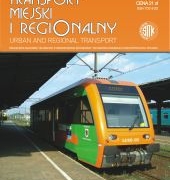 SITK RP
SITK RP 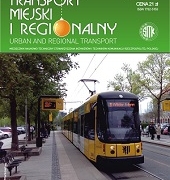
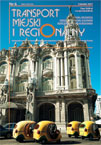 SITK RP
SITK RP 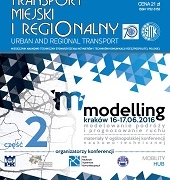 SITK RP
SITK RP 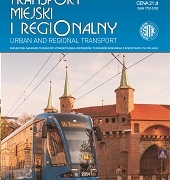 SITK RP
SITK RP 